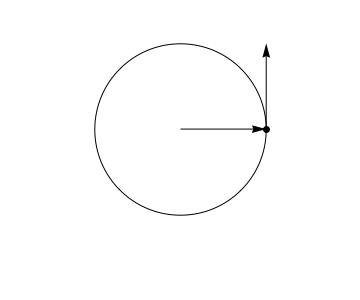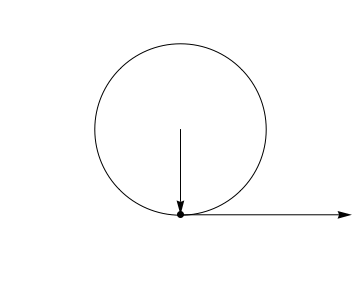answered
2014-07-08 05:49:53 -0600
This is a hard one, so here's my answer. Suppose that $\textbf{r}(t)$ is a vector valued function of constant magnitude. I'm going to compute
$$\frac{d}{dt} (\textbf{r}(t) \cdot \textbf{r}(t))$$
in two ways. First, the dot product rule states that
$$
\frac{d}{dt} (\textbf{r}(t) \cdot \textbf{r}(t)) = \textbf{r}'(t) \cdot \textbf{r}(t) + \textbf{r}(t) \cdot \textbf{r}'(t)
= 2 \; \textbf{r}(t) \cdot \textbf{r}'(t).
$$
On the other hand, since $\textbf{r}(t)$ has constant magnitude, we know that $\textbf{r}(t) \cdot \textbf{r}(t) = \||\textbf{r}(t)\||^2$ is constant. Thus,
$$\frac{d}{dt} (\textbf{r}(t) \cdot \textbf{r}(t)) = 0.$$
As result, these two computations must be equal so we have
$$2 \; \textbf{r}(t) \cdot \textbf{r}'(t) = 0,$$
which only happens if
$$\textbf{r}(t) \cdot \textbf{r}'(t) = 0.$$
Examples
The standard example $\textbf{r}(t) = \langle \cos(t), \sin(t) \rangle$, which satisfies $\||\textbf{r}(t)\||=1$. Since, $\textbf{r}'(t) = \langle -\sin(t), \cos(t) \rangle$, it's easy to see that $\textbf{r}(t) \cdot \textbf{r}'(t)=0$. Geometrically, this states that the velocity vector of uniform circular motion is perpendicular to the position vector, which only makes all the sense in the world.

It's important to realize, though, that the theorem is much more general than that. The motion need not be uniform at all.

The motion could even be in 3D along a sphere.


